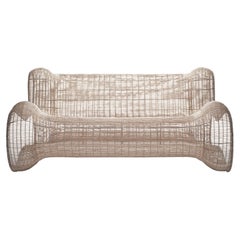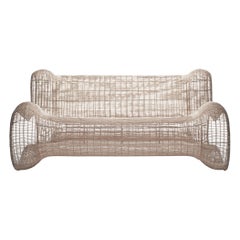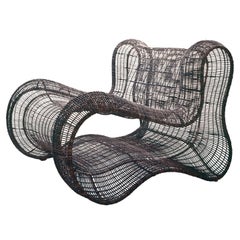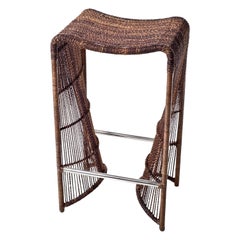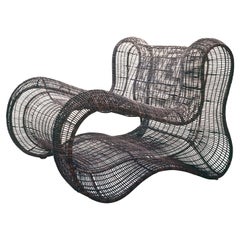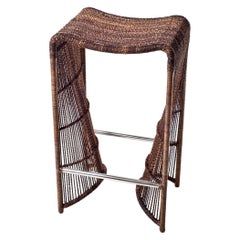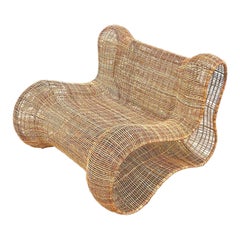Cobonpue Pigalle
2010s Philippine Modern Loveseats
Steel
2010s Philippine Modern Loveseats
Steel
2010s Philippine Modern Armchairs
Steel
2010s Philippine Modern Stools
Steel, Stainless Steel
2010s Philippine Modern Armchairs
Steel
2010s Philippine Modern Stools
Steel, Stainless Steel
Recent Sales
21st Century and Contemporary Philippine Chairs
Steel
People Also Browsed
20th Century French Mid-Century Modern Ceramics
Ceramic
21st Century and Contemporary Brazilian Modern Dining Room Chairs
Wood
2010s American Modern Dining Room Chairs
Cane, Walnut, Leather
21st Century and Contemporary Italian Mid-Century Modern Wall Lights and...
Brass
2010s American Modern Stools
Wood, Oak
Vintage 1960s Finnish Mid-Century Modern Commodes and Chests of Drawers
Oak
Vintage 1940s Swedish Scandinavian Modern Cabinets
Faux Leather, Birch, Plywood
20th Century Italian Mid-Century Modern Sideboards
Rosewood
21st Century and Contemporary Indonesian Stools
Rattan
2010s Italian Mid-Century Modern Table Lamps
Brass
2010s Bosnian Mid-Century Modern Daybeds
Fabric, Beech, Velvet
2010s Italian Modern Wall Lights and Sconces
Brass
2010s Italian Mid-Century Modern Stools
Ash, Faux Fur, Hardwood
21st Century and Contemporary Austrian Mid-Century Modern Wall Brackets
Brass
20th Century Congolese Mid-Century Modern Ashtrays
Malachite
Mid-20th Century Italian Mid-Century Modern Table Lamps
Metal, Brass
Kenneth Cobonpue for sale on 1stDibs
Kenneth Cobonpue is a multi-award winning furniture designer and manufacturer from Cebu, Philippines. His passage to design began in 1987 while studying industrial design at Pratt Institute in New York.
While completing his studies, Cobonpue apprenticed for a leather and wood workshop near Florence, Italy. He went on to study furniture marketing and production at the Export-Akademie Baden-Württemberg in Reutlingen, Germany, under a private and state scholarship program, and subsequently worked in Bielefeld and Munich.
Cobonpue returned home to Cebu in 1996 to manage Interior Crafts of the Islands, Inc., a furniture design and manufacturing company founded by his mother, Betty Cobonpue, in 1972. Discovering that modern design could have a new face using natural fibers and materials, Cobonpue created pieces of functional art, offering an alternative to the Western definition of modern design. Today, the KENNETHCOBONPUE brand has become known globally for its unique designs and extensive roster of clientele, which includes Hollywood celebrities and royalty.
With his masterful way of integrating nature, traditional craft and innovative technologies in his work, designer and creative director Cobonpue has earned international awards and recognition for his creative, organic and expressive pieces. Working closely with some of the world’s leading designers — from household names to emerging talents — Cobonpue has been pushing the envelope for design in the Philippines and sharing his vision with a global audience.
Awards to Cobonpue’s credit include five Japan Good Design Awards, the grand prize at the Singapore International Design Competition, the DFA Design for Asia Award from the Hong Kong Design Centre, the American Society of Interior Design Top Pick selection and the French Coup de Coeur award. Several of Cobonpue’s designs were selected for several editions of the International Design Yearbook published in London and New York. Phaidon’s book, & Fork, underscores Cobonpue’s position as a leader of a new movement incorporating new technologies in crafts. In 2007, TIME magazine called him “rattan’s first virtuoso.” Cobonpue was named the Designer of the Year in the first edition of Maison&Objet Asia held in March 2014 in Singapore.
Cobonpue reveals new work each year in the design shows from Milan to New York, and he speaks regularly about Southeast Asian design all over the world. He has also appeared in European television and in countless international magazines and newspapers around the world. Various Cobonpue designs have also appeared in full-length feature films and television, such as Oceans 13 and CSI.
Find a collection of Kenneth Cobonpue furniture today on 1stDibs.
(Biography provided by Galerie Philia)
A Close Look at Modern Furniture
The late 19th and early 20th centuries saw sweeping social change and major scientific advances — both of which contributed to a new aesthetic: modernism. Rejecting the rigidity of Victorian artistic conventions, modernists sought a new means of expression. References to the natural world and ornate classical embellishments gave way to the sleek simplicity of the Machine Age. Architect Philip Johnson characterized the hallmarks of modernism as “machine-like simplicity, smoothness or surface [and] avoidance of ornament.”
Early practitioners of modernist design include the De Stijl (“The Style”) group, founded in the Netherlands in 1917, and the Bauhaus School, founded two years later in Germany.
Followers of both groups produced sleek, spare designs — many of which became icons of daily life in the 20th century. The modernists rejected both natural and historical references and relied primarily on industrial materials such as metal, glass, plywood, and, later, plastics. While Bauhaus principals Marcel Breuer and Ludwig Mies van der Rohe created furniture from mass-produced, chrome-plated steel, American visionaries like Charles and Ray Eames worked in materials as novel as molded plywood and fiberglass. Today, Breuer’s Wassily chair, Mies van der Rohe’s Barcelona chair — crafted with his romantic partner, designer Lilly Reich — and the Eames lounge chair are emblems of progressive design and vintage originals are prized cornerstones of collections.
It’s difficult to overstate the influence that modernism continues to wield over designers and architects — and equally difficult to overstate how revolutionary it was when it first appeared a century ago. But because modernist furniture designs are so simple, they can blend in seamlessly with just about any type of décor. Don’t overlook them.
Finding the Right Seating for You
With entire areas of our homes reserved for “sitting rooms,” the value of quality antique and vintage seating cannot be overstated.
Fortunately, the design of side chairs, armchairs and other lounge furniture — since what were, quite literally, the early perches of our ancestors — has evolved considerably.
Among the earliest standard seating furniture were stools. Egyptian stools, for example, designed for one person with no seat back, were x-shaped and typically folded to be tucked away. These rudimentary chairs informed the design of Greek and Roman stools, all of which were a long way from Sori Yanagi's Butterfly stool or Alvar Aalto's Stool 60. In the 18th century and earlier, seats with backs and armrests were largely reserved for high nobility.
The seating of today is more inclusive but the style and placement of chairs can still make a statement. Antique desk chairs and armchairs designed in the style of Louis XV, which eventually included painted furniture and were often made of rare woods, feature prominently curved legs as well as Chinese themes and varied ornaments. Much like the thrones of fairy tales and the regency, elegant lounges crafted in the Louis XV style convey wealth and prestige. In the kitchen, the dining chair placed at the head of the table is typically reserved for the head of the household or a revered guest.
Of course, with luxurious vintage or antique furnishings, every chair can seem like the best seat in the house. Whether your preference is stretching out on a plush sofa, such as the Serpentine, designed by Vladimir Kagan, or cozying up in a vintage wingback chair, there is likely to be a comfy classic or contemporary gem for you on 1stDibs.
With respect to the latest obsessions in design, cane seating has been cropping up everywhere, from sleek armchairs to lounge chairs, while bouclé fabric, a staple of modern furniture design, can be seen in mid-century modern, Scandinavian modern and Hollywood Regency furniture styles.
Admirers of the sophisticated craftsmanship and dark woods frequently associated with mid-century modern seating can find timeless furnishings in our expansive collection of lounge chairs, dining chairs and other items — whether they’re vintage editions or alluring official reproductions of iconic designs from the likes of Hans Wegner or from Charles and Ray Eames. Shop our inventory of Egg chairs, designed in 1958 by Arne Jacobsen, the Florence Knoll lounge chair and more.
No matter your style, the collection of unique chairs, sofas and other seating on 1stDibs is surely worthy of a standing ovation.
